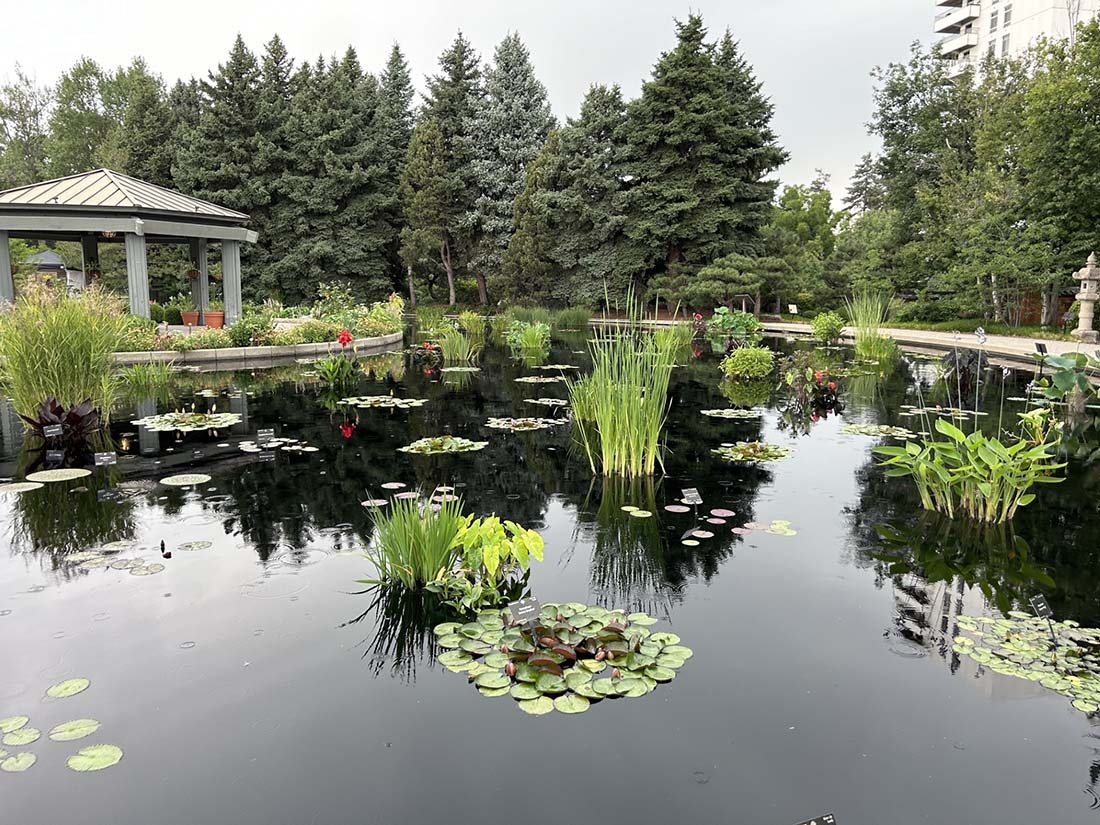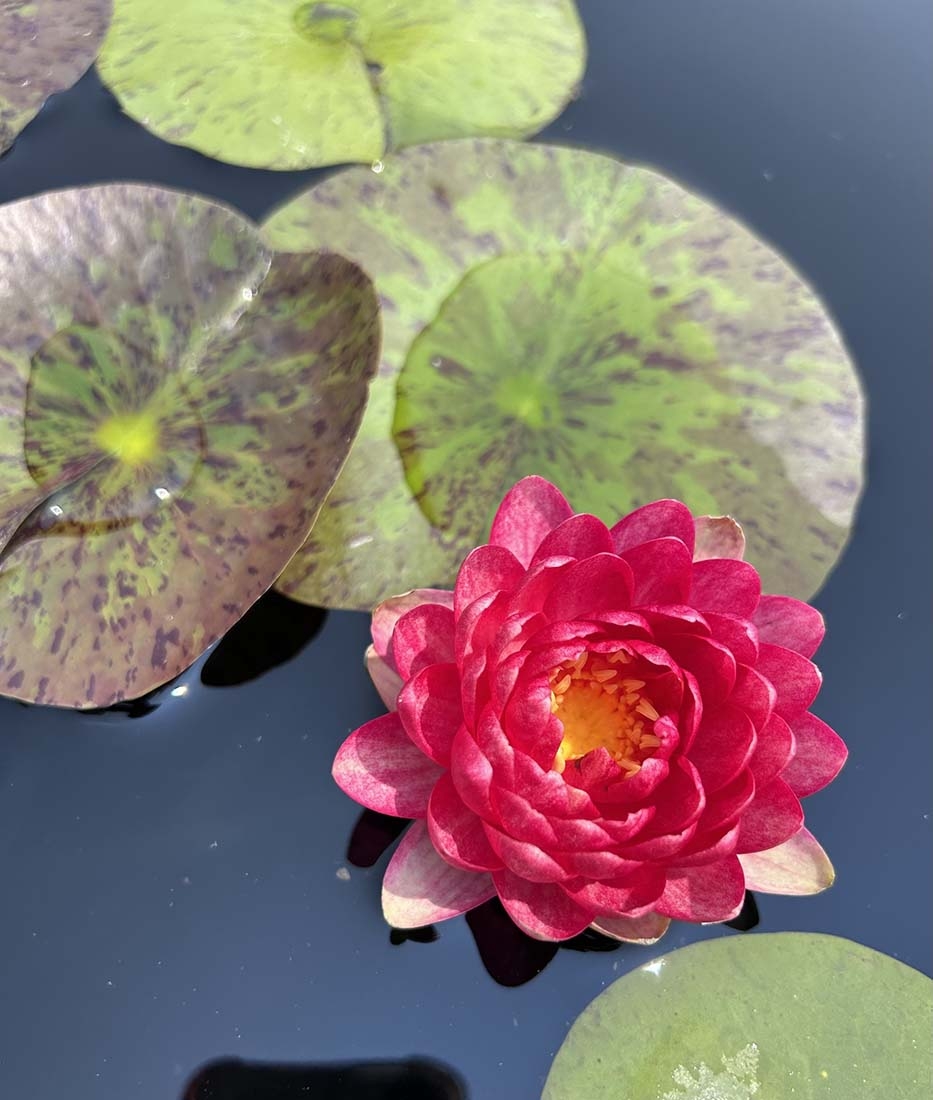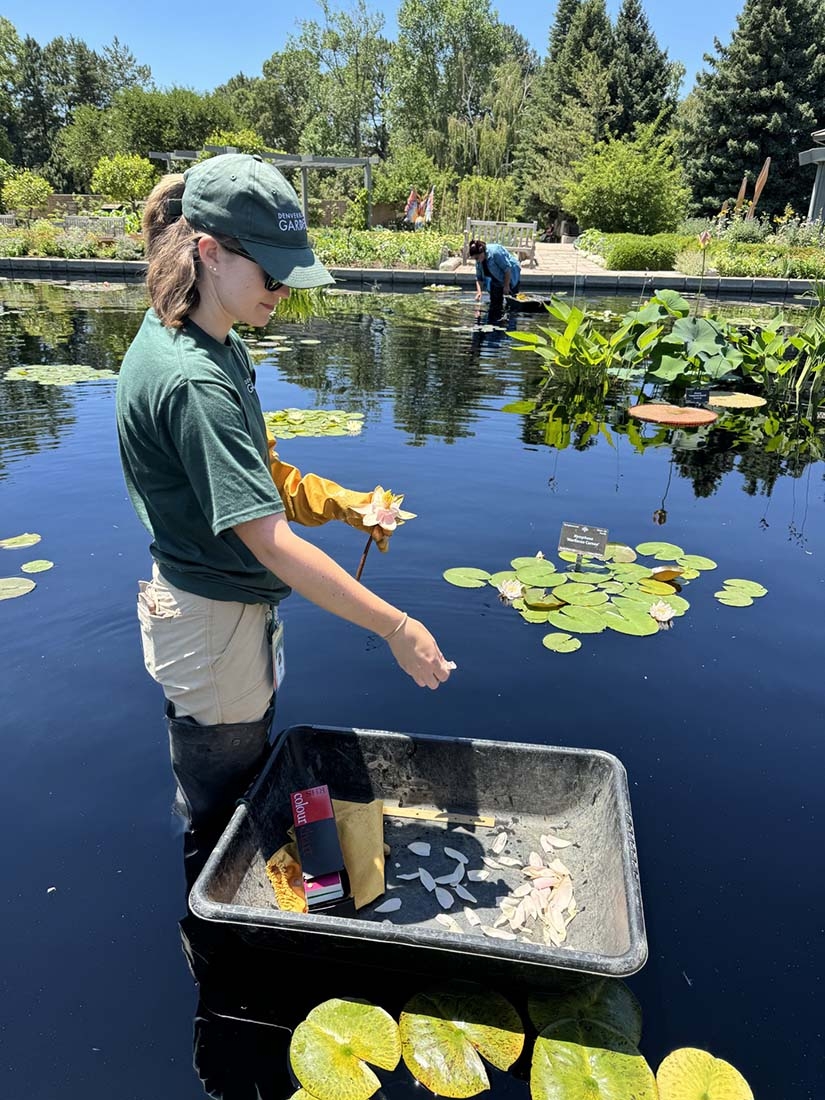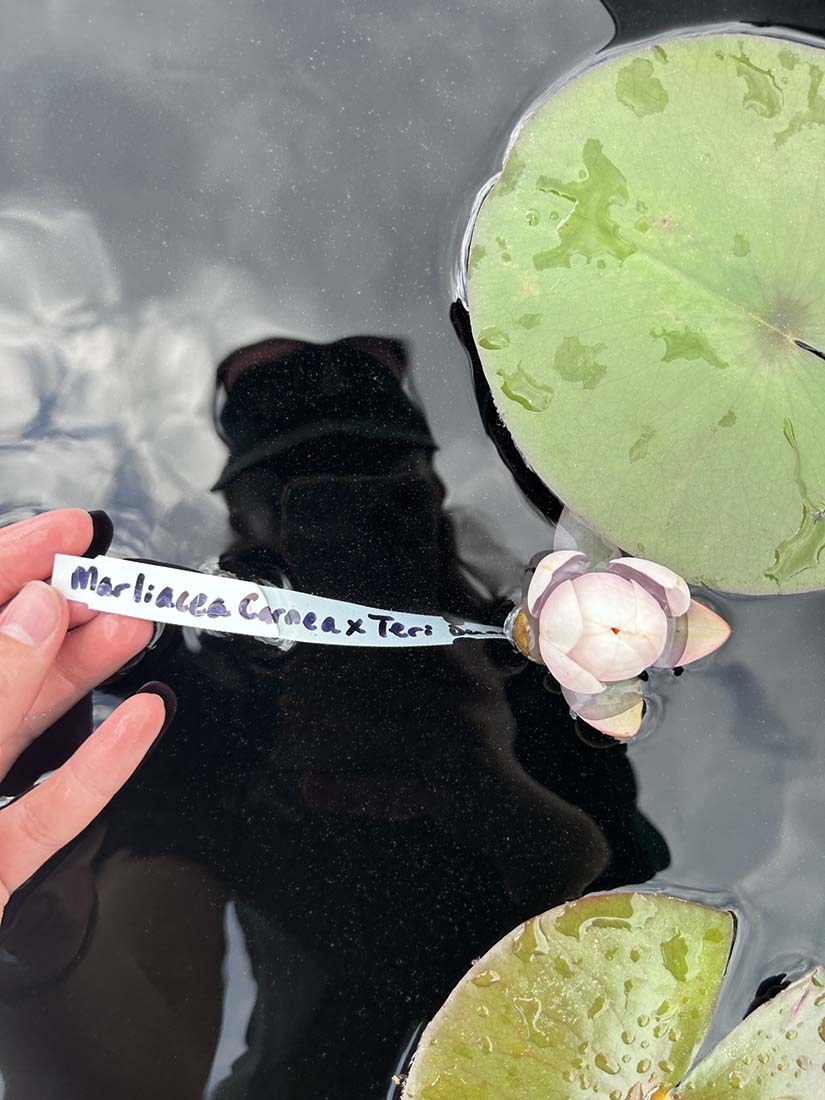The World of Waterlily Hybridization
I was lucky to grow up in a family who had a fondness for art and nature. Frequent trips to various museums, zoos and to Denver Botanic Gardens helped me grow this affection myself –especially when the Denver Art Museum had an exhibit on Monet and his waterlilies in 2019. When I discovered this Waterlily Registration Internship, I just knew I had to apply.
Most of my efforts this past summer during my internship surrounded the idea of hybridized waterlilies. Three major projects I was tasked with were taking photos and notes on this year's competition waterlilies, registering waterlilies through the International Waterlily and Water Gardening Society (IWGS) and attempting to make my own hybrid waterlily.
For the IWGS New Waterlily Competition, hybridizers send their waterlilies to participating botanic gardens, where they are documented over an eight-week period with growers’ notes and photos. After those eight weeks are up, the information is sent to international judges who determine a winner in the fall. Most hybridizers enter for publicity purposes, since customers are more likely to buy from them if they’ve won an award. This year we grew hardy and hardy x tropical lilies for hybridizers from Thailand, China, France, Germany and the United States. The judges typically look for interesting flower shapes and colors, growth habit, new leaf color or pattern and uniqueness.
Some hybridized waterlilies at the Gardens are not registered through IWGS yet, so it was my job to collect data on those and enter it into the IWGS system. Some of the data I collected included petal number, petal and leaf color, and flower and pad size. Those that have been registered are published in the IWGS 4th Quarter Journal. This is important to hybridizers because they can have their waterlily recognized in a publication, and it is also less likely that another hybridizer will use the same or a similar name in the future.
My last project focused on making my own hybrid. The process involved finding parent plants I liked the traits of, then taking pollen from a male flower and putting it into a female flower and labeling it. If the female flower developed a seed pod, I would put a bag over that seed pod and wait for it to explode the seeds into the bag. I realized that with waterlilies, not every cultivar is compatible. Most of my seeds were not viable, but I suppose part of the fun is finding out which cultivars lead to success. I am so glad I got to learn more about aquatic plants and the process of hybridization through interactions with the amazing staff and through trial and error. This was an incredible summer, and I am eternally grateful to Denver Botanic Gardens for letting me try my hand at waterlilies and connect to my inner Monet.
This article was contributed by Sophie Mantooth, a senior at Colorado State University majoring in horticulture with an emphasis in business. After graduation in December, she hopes to learn more about the world of horticulture through participating in WWOOF (World Wide Opportunities on Organic Farms) United Kingdom.
Gallery




Add new comment